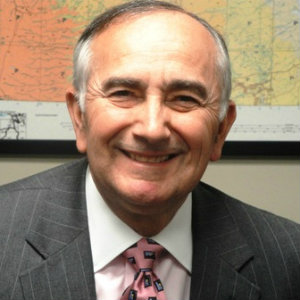The Ideology & Strategy of al Qaeda & ISIS
Explore major intellectual discussions underpinning the Salafi-jihadist ideology of al Qaeda and ISIS.
Winter 2018
Washington, DC
History takes on a different aspect when viewed not from years removed and with the consequences of decisions taken known, but from the viewpoints of the actual policymakers as decisions approached and as unexpected events, rivalries, counter-moves, mistakes, and imperfect understandings intervened. Moreover, judging historical events requires an exploration of what might have happened over time if different decisions had been made. This course explores these themes in light of one of the most dynamic confrontations of the late 20th and early 21st centuries: the U.S. and Iraq.
Twice in the last quarter century America has gone to war with Iraq, and the two were in a state of low-level conflict during the interim. Both times America went to war with Congressional authorization, at the head of an international coalition, and in support of U.N. Resolutions. The 1990–1 Persian Gulf War ended quickly with minimal U.S. casualties, but left a brutal dictator in place and American interests at risk. The U.S. invasion of Iraq in 2003 quickly removed the regime that had repeatedly defied America and gave Iraqis a chance to devise their own future. However, the war soon devolved into a messy combination of insurgency and sectarian fighting that brought thousands of U.S. casualties, sapped American will and credibility, and worked to the benefit of America’s other regional nemesis, Iran. These events occurred not in isolation, but against the backdrop of broader international developments, particularly the ending of the Cold War, the attacks of 9/11/2001, and the on-going U.S. confrontation with radical Islam.
This weeklong seminar examines some key strategic decisions made at critical phases of that long confrontation. It will briefly review the first war and its ending, but the course will focus most heavily on the second war, its justification, pre-invasion planning, conduct, and post-invasion phase. It will be led by Paul D. Wolfowitz, who served during the Persian Gulf War as the Under Secretary of Defense for Policy and as Deputy Secretary of Defense during the first years of the Iraq War, and by Lewis Libby, who served during the first war as Deputy Under Secretary of Defense for Policy and during the Iraq War as Chief of Staff and National Security Adviser to Vice President Dick Cheney.
Images courtesy of George W. Bush White House | U.S. Air Force
Paul Wolfowitz on the Iraq War, 10 years later

Lewis “Scooter” Libby is a distinguished fellow at the Foundation for Defense of Democracies. He has held several high level positions in the federal government related to his current work on national security and homeland security affairs. This included roughly a dozen years working in the White House, the U.S. Department of Defense, and the U.S. Department of State.

Lewis “Scooter” Libby is a distinguished fellow at the Foundation for Defense of Democracies. He has held several high level positions in the federal government related to his current work on national security and homeland security affairs. This included roughly a dozen years working in the White House, the U.S. Department of Defense, and the U.S. Department of State.
From 2001 to 2005, Libby served as Chief of Staff to Vice President Richard B. Cheney, Assistant to the Vice President for National Security Affairs, and Assistant to the President. In these roles he attended nearly all National Security Council and Homeland Security Council meetings and participated in numerous high level meetings, at home and abroad, with foreign government and U.S. officials. From 1998-99, Libby served as the Legal Advisor to the U.S. House of Representatives’ Select Committee on U.S. National Security and Military/Commercial Concerns with the Peoples’ Republic of China, commonly known as the “Cox Committee.” From 1989 to 1993, during the George H. W. Bush administration, Libby served in the United States Department of Defense as Principal Deputy Under Secretary (Strategy and Resources), and later was confirmed by the U.S. Senate as Deputy Under Secretary of Defense for Policy.
Prior to joining the George W. Bush administration, Libby served as the managing partner of the Washington office of the international law firm Dechert. He was a member of the firm’s litigation department and chaired the Washington office’s Public Policy Practice Group. He also served as the Managing Partner of the Washington Office of the law firm, Mudge, Rose, Guthrie, Alexander & Ferdon.
In 1993, Libby was awarded the Department of Defense Distinguished Service Award and the Department of the Navy Distinguished Public Service Award. He received the Department of State’s Foreign Affairs Award for Public Service in 1985.
Paul Wolfowitz is a scholar at the American Enterprise Institute. He spent more than three decades in public service and higher education. Most recently, he served as president of the World Bank and deputy secretary of defense.
Paul Wolfowitz is a visiting scholar at the American Enterprise Institute where he works on development and national security issues.
Before joining AEI, Mr. Wolfowitz spent more than three decades in public service and higher education, working in the administrations of seven different presidents. Most recently, he served as president of the World Bank and deputy secretary of defense. At the World Bank he focused on the problem of corruption and the challenges of sub-Saharan Africa. As ambassador to Indonesia and assistant secretary of state for East Asia in the Reagan administration, Mr. Wolfowitz was an advocate of reform and political openness. He was involved in Persian Gulf security for almost 30 years during three different tours at the Department of Defense.
Mr. Wolfowitz has a Ph.D. in political science from the University of Chicago and a B.A. in mathematics from Cornell University.
Readings:
Recommended Readings:
Readings:
Recommended Readings:
Discussion Questions:
Readings:
Discussion Questions:
Readings:
Recommended Readings:
Discussion Questions:
Readings:
Recommended Readings:
Discussion Questions:
Readings:
Recommended Readings:
Discussion Questions:
Readings:
Recommended Readings:
Discussion Questions:
Readings:

John R. Allen
John R. Allen is President of the Brookings Institution and a retired U.S. Marine Corps four-star general. He previously served as commander of the International Security Assistance Force in Afghanistan and special presidential envoy to the Global Coalition to Counter ISIL.

James M. Dubik
LTG James M. Dubik (U.S. Army, Ret.) is a Senior Fellow at the Institute for the Study of War and a Professor at Georgetown University’s Security Studies Program. General Dubik has extensive operational experience in Iraq, Afghanistan, Japan, Korea, Thailand, Bosnia, Haiti, Panama, Honduras, and in many NATO countries.

Frederick W. Kagan
Frederick W. Kagan is a Senior Instructor with the Hertog War Studies Program at the Institute for the Study of War. The author of the 2007 report “Choosing Victory: A Plan for Success in Iraq,” he is one of the intellectual architects of the successful “surge” strategy in Iraq. He is the director of AEI’s Critical Threats Project.

Kimberly Kagan
Kimberly Kagan is a Senior Instructor with the Hertog War Studies Program and founder and president of the Institute for the Study of War. She is a military historian who has taught at the U.S. Military Academy at West Point, Yale, Georgetown, and American University.

Michael Doran
Michael Doran, an expert in U.S. policy toward the Middle East, radical Islam, and the Arab- Israeli conflict, is a Senior Fellow at the Hudson Institute in Washington, DC. He has also held a number of senior U.S. government posts related to Middle East policy and strategic communication.

Vance Serchuk
Vance Serchuk is Executive Director of the KKR Global Institute and an Adjunct Senior Fellow at the Center for a New American Security. Prior to joining KKR, Mr. Serchuk served for six years as the senior national security advisor to Senator Joseph Lieberman (I-Connecticut).